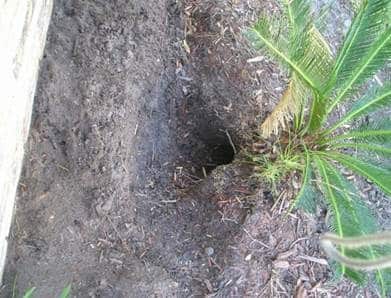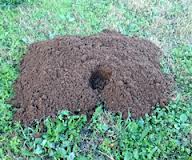Where did the armadillo come from?
The nine-banded armadillosare not native to the U.S.
They began slowly expanding their range north from —
Mexico into Texas around the 1880’s.
The nine-banded armadillo is the only armadillo species —
known to inhabit North America.
Today they are found from Texas to Colorado and eastward —
to Florida and ranging as far north as the Carolinas.
Armadillo’s Foraging Abilities
The armadillo feeds on earth worms, ants, grubs and beetles,–
in fact, they are fond of all kinds of insects.
Armadillos have a very sensitive sense of smell.
Their olfactory bulbs…
— the part of the brain that detects odor,
— is about 1/3rd the size of their cerebrum, —
the part of the brain used for learning and memory.
An Armadillo can sniff out a grub which may be…
Six (6) inches beneath the surface of the soil.
Foraging for food…
Since the majority of their food source is found on or under the surface of the soil.
the armadillo uses their sense of smell to find the food and their snout and front paws to dig into the soil —
to reach the food.
These actions mar and damage the lawn or garden.
The damage they cause…
The ugly damage done to lawns, gardens and shrubs, —
by their rooting and digging activity; —
classifies the armadillo as a Pest.
When rooting for grubs and worms the animal leaves behind —
cone-shaped feeding holes, three to six inches in depth.
The armadillos will regularly revisits their “feeding holes”–
in search of any new insects, which may have fallen into the hole.
The armadillo has a foraging range of approximately 10 acres —
and will wreak havoc on gardens and lawns in this area, —
if not controlled.
Their population will grow — and will grow fast!
Armadillos have a five month gestation period and bear four young at a time; —
therefore their population in an area will grow.
A single armadillo may have up to 15 burrows.
The burrow is their safe place, —
so the animal will dig burrows in close proximity to his foraging areas.
In times of danger, the animal runs into the burrow.
To prevent the burrowing, —
deter the animal from your lawn –
and in turn prevent them from digging burrows.
In addition, since the armadillo is not native to the USA,
they have very few predators to keep the population down,
and having no predators enhances their population growth.
More Armadillos equals More Burrows…
2 adults armadillos + 4 offspring armadillos, eventually —
equals 6 adult armadillos.
6 adult armadillos multiplied by 15 burrows for each animal —
equals approximately 90 burrows from this one armadillo ‘family’.
The burrows may have several entrances for emergency access.
The average armadillo burrow —
has an entrance diameter of 8 inches —
and is up to approximately 25 – 30 feet in length underground.
The armadillo burrow can undermine structure foundations.
The Armadillo will burrow
… under your house

… under your air conditioning units

… and under your plants and shrubs.

Armadillos share…
Armadillos will share their burrows with other critters such as…
tortoises, rats and snakes.
Besides armadillos being under your house, air-conditioner or shrubs,
you may have these other critters as well.
When do you see Armadillos?
Most often, you may not see the armadillo.
The armadillo’s shell provides little insulation to keep their body warm or cool.
–In the warm summer months –
the armadillo does most of its foraging–
in the cool of the evening and at night.
–In the cooler winter months —
the armadillo keeps warm in its burrow and does most of its foraging —
in the warmer hours of the afternoon.
How to be rid of armadillos?
The Armadillo has a sensitive sense of taste and smell system,
but it has poor eye sight.
Since the eye sight is poor,
it relies heavily on smell and taste to obtain food.
The animal actually smells and tastes the soil when digging/rooting for food.
A strong noxious odor and unpleasant taste can help evict an armadillo –
from its foraging area.
The key to being rid of armadillos –
is using their senses of taste and smell against them.
Taste and Smell Senses.
Yard Gard utilizes these two senses to change the behavior of the animal through —
Operant Conditioning.
Therefore, Yard Gard deters the animal from foraging in a treated area —
without harming the animal.
Since the Armadillo has very sensitive smell and taste senses;
Yard Gard provides a “Positive Punishment” (obnoxious smell and taste) –
which affecting both these senses, –
thereby deterring the animal to go elsewhere…



0 Comments